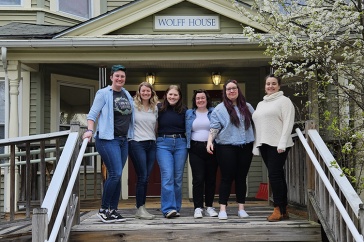In my last blog post, I focused on challenges in same-sex relationships. However, I decided to not address the issues faced by people who are not cisgender. Those issues are unique, and they deserved their own article. That being said, many things from my previous article could apply here and provide context for this article. I would definitely recommend checking it out.
Members of the trans community face high rates of sexual violence. These rates increase when someone’s gender identity intersects with other aspects of who they are, such as their race, age or economic status. The trans community rarely receives the amount of attention and support that other groups do. This is shown through the lack of data collection and lack of education many people receive when working in violence prevention.

The trans community in many areas is small and interconnected. When a perpetrator is a part of that community, it can be difficult for the survivor to separate themselves from harmful situations, keep safe or access resources. More can be found in my previous article about this issue.
Domestic violence and other issues can be different when the survivor is trans. To be clear, sexual violence is never acceptable. That does not change when someone is trans. There can be a belief that trans people should accept whatever treatment they receive in a relationship. That is not true. Nothing justifies or makes violence acceptable. Trans people are just as deserving of safety as everyone else.
Domestic abusers can engage in specific methods to harm trans survivors. The first example is the danger of outing. People who are part of the LGBTQ+ community are not always in environments safe for them to publicly identify. They may not feel comfortable or want to do so. Abusers can purposefully out someone. This has a twofold effect. Firstly, that person can become threatened outside of the relationship, making it harder to leave. Secondly, the survivor will likely become more reliant on the abuser. As an example, an abuser could out someone to their employer, resulting in the survivor losing their job. They are then dependent on the abuser financially. The second example of abuse toward trans survivors is based in verbal aggression. Many abusers will play on stereotypes or use slurs. Abusers may also encourage body dysmorphia and refuse to respect someone’s pronouns as a form of abuse.

A trans survivor also can exist precariously in terms of gender presentation. Some abusers might hide items that can help someone transition. This can be especially dangerous if someone is taking hormones to transition. Domestic violence tactics are about power and control. The abuser takes control of the survivor’s gender presentation and uses it to harm the survivor.
What is important to understand is how abusers and society interact in this dynamic. Much of the abuser’s power comes from the fact that the world is not often a safe place for trans people. Abusers play on cultural oppression to control the survivor. If a survivor knows they are protected at their place of employment, have access to competent and inclusive resources and are confident in their support system, the abuser has less power.
If anyone needs access to resources, here are a few:
- SHARPP has confidential, culturally competent support for LGBTQ+ survivors and members of the UNH community. Our 24/7 helpline at 603-862-7233 is available year round, and we hold walk-in hours in our offices next to Health & Wellness.
- FORGE has a number of helpful resources for survivors who are not cisgender.
- This Everyday Feminism article is a great crash course on domestic violence in the trans community.
-
Written By:
Colleen Spear '21 | SHARPP

















































